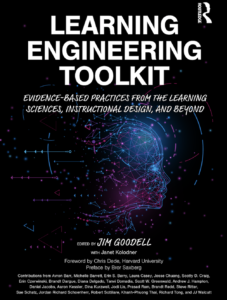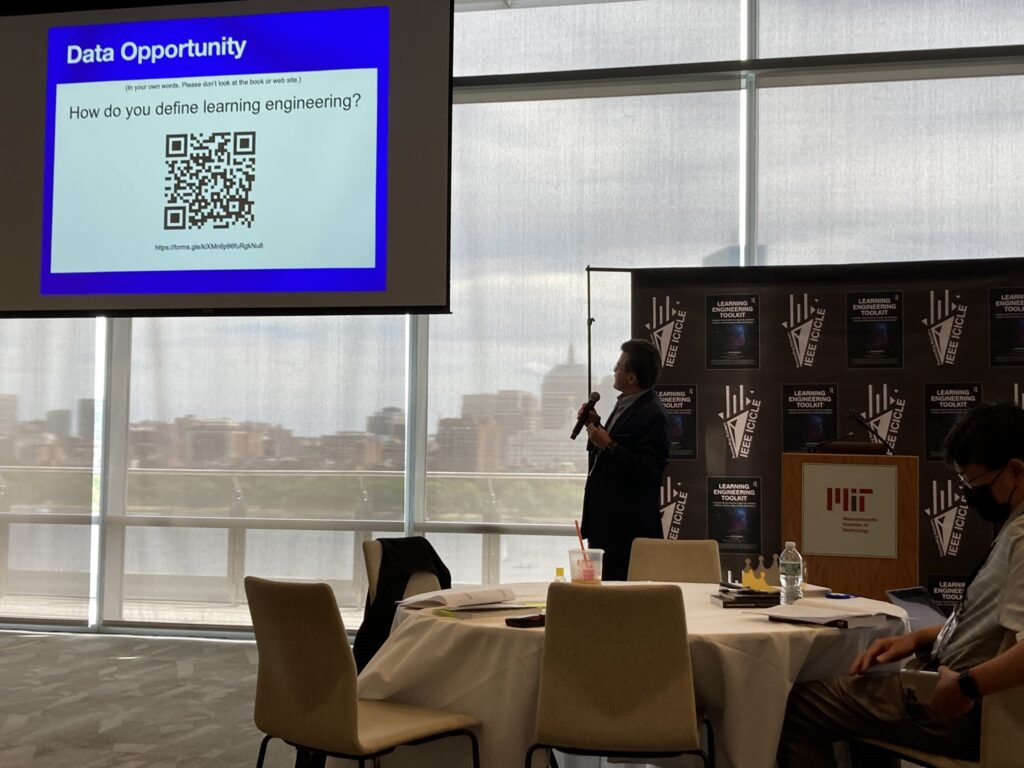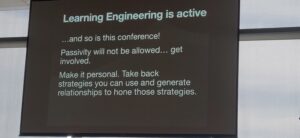
2022 ICICLE Conference on Learning Engineering
26-28 July 2022
Samberg Conference Center, MIT Campus, Cambridge, MA USA
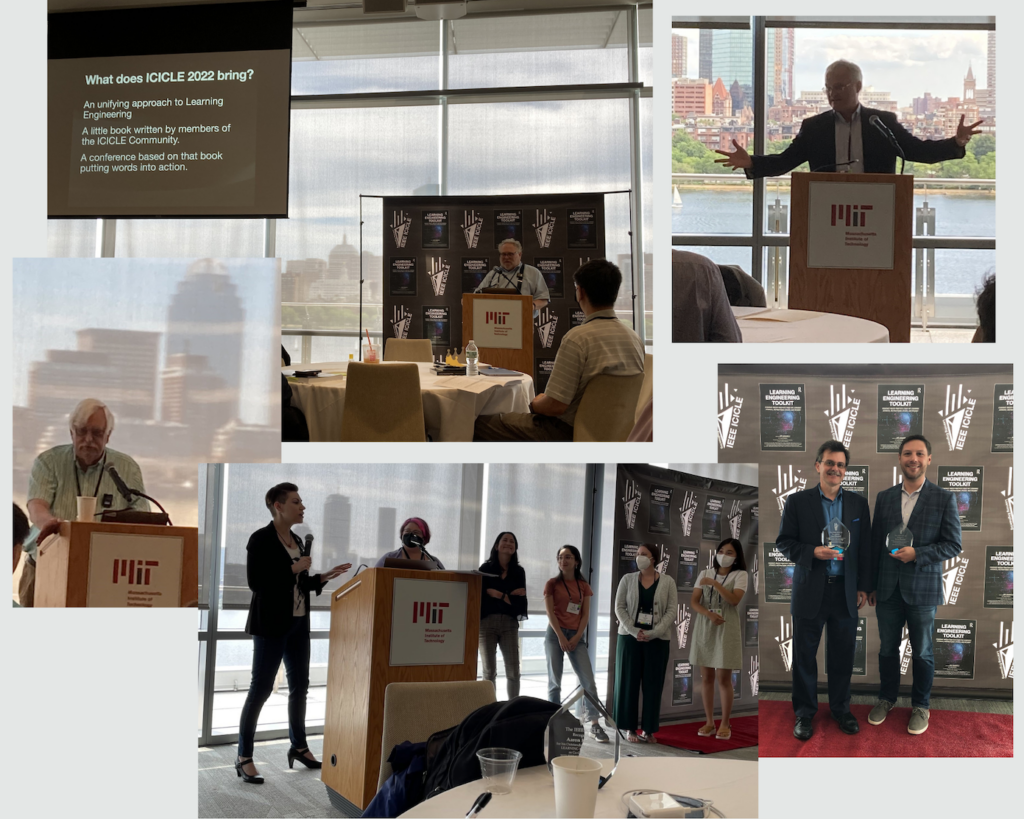
Jim Goodell and Aaron Kessler, Conference Co-Chairs; Sae Schatz, Guest Speaker with Grad Students, Anne Fensie, Carolina Ali, Anahit Vardanyan, Lauren Totino, and Uhjin Sim;
Chris Dede, Guest speaker
The 2022 ICICLE Conference was an engaging gathering with a diverse group of professionals that deepened understanding of learning engineering processes and practices. At the conference, the Learning Engineering Toolkit was launched. This book framed the themes of the conference’s interactive sessions through which participants developed a shared understanding of the learning engineering process, core concepts, and breadth of applicability.
Learning Engineering is a process and practice that
applies the learning sciences using human-centered engineering design methodologies and
data-informed decision making to support learners and their development.
Conference Sessions
The IEEE Conference Companion Workbook includes the Conference Schedule, Sessions Information and Key Resources. Each of the sessions below is described in the workbook.
How Do You Define Learning Engineering?
Introduction Chapter in the Toolkit
Activity in Conference Workbook, page 8
Learning Engineering is a discipline of disciplines, and everyone may be coming to a definition of it differently. At the beginning of the conference, we asked participants which part of the Learning Engineering definition resonated most with them.
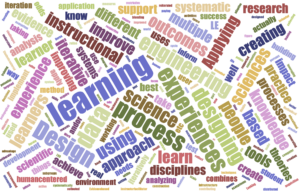
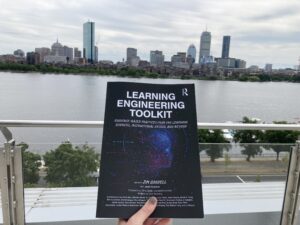
Tools Exploration
Chapters 8-18 in the Toolkit
Activity in Conference Workbook, page 9
The Learning Engineering Toolkit has eleven chapters dedicated to tools and recommended practices that may be broadly applied across the learning engineering process. These include Understanding the Challenge, Learning Sciences, Teams, Lean-Agile Development, Design, Instrumentation, Software and Technology Standards, Motivation, Implementation, Ethical Decision-Making and Data Analysis.
LE Applies Learning Sciences
Chapters 2 and 9 in the Toolkit
Activity in Conference Workbook, pages 10-13
Using the frame of “humans are learners; learners are human,” participants were introduced to processes and influences from the learning sciences to consider when designing learning experiences. What do we know about learning that could be integrated into learning engineering practice? Through a scenario-based design activity, groups applied what is known about how people learn (e,g., mental model building, cognitive load, feedback) and how to support learning (e.g., motivation, agency, authenticity).
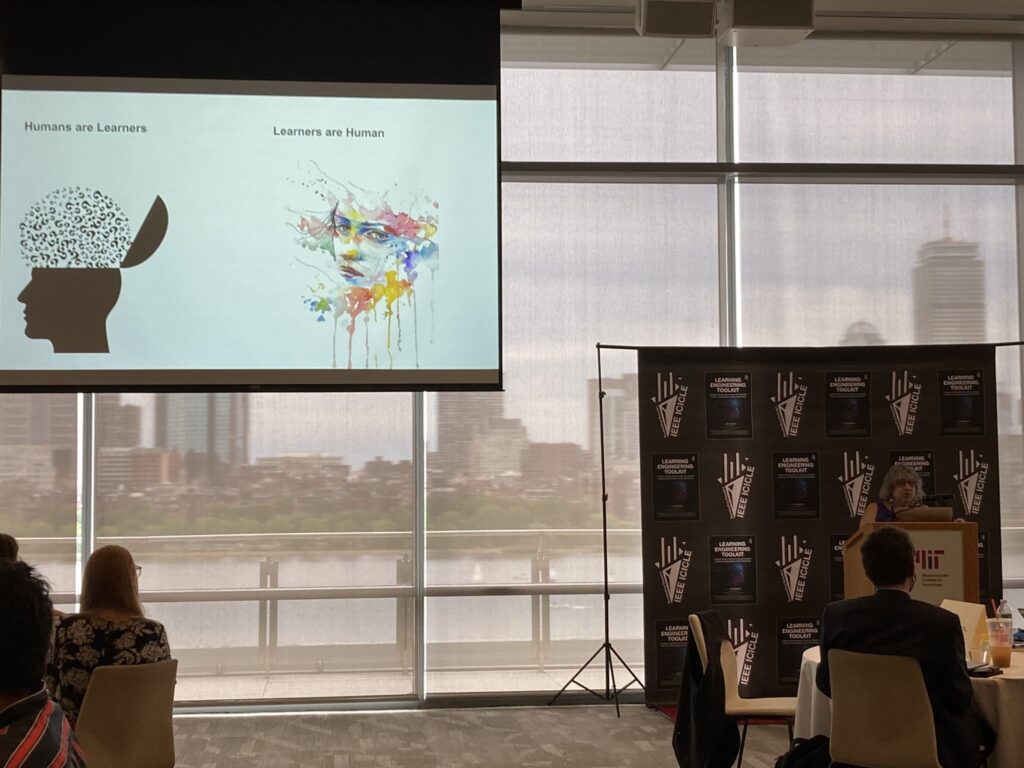

Learning Engineering Process
Chapter 1 in the Toolkit
Activity in Conference Workbook, page 14-17
The learning engineering process encourages each part of the process (Creation, Implementation, Investigation) to be considered concurrently throughout instead of sequentially. What parts of the process are new to you? What parts do you or others on your team do? What haven’t you thought about? Participants dove deeper on how to define a learning engineering challenge given certain scenarios.
LE is Interdisciplinary
Chapter 10 in the Toolkit;
Activity in Conference Workbook, pages 18-20
Learning engineering is a team sport, and there is much to consider when leaders bring a team together. Groups applied teaming strategies to scenarios involving an institutional technology process in higher ed, K-12, or industry to uncover areas of expertise needed to address the challenge and discuss how to deal with differing priorities among team members while working toward a shared goal.
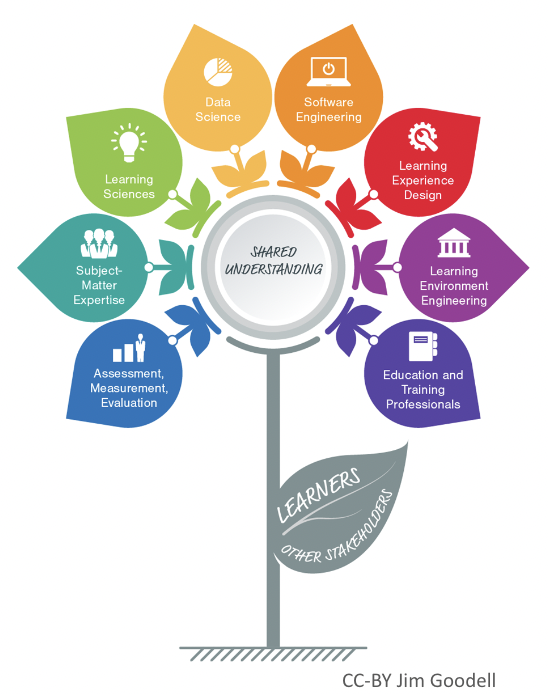
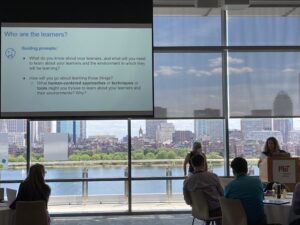
LE is Human-Centered
Chapters 3 and 12 in the Toolkit;
Activity in Conference Workbook, page 21-24
Continuing the theme of “humans are learners; learners are human,” participants heard more about human-centered design and related approaches and tools. How do we apply human-centered design – a key part of learning engineering – keeping our learners in mind? Groups examined scenarios to learn how to recognize learner variability as part of human-centered design.
LE is Engineering
Chapter 4 in the Toolkit
Activity in Conference Workbook, pages 26-28
As the name implies, learning engineering draws from the field of engineering, in that it applies principles from engineering to support learning, such as systems thinking, modeling, working with constraints, control theory, and feedback loops. Groups worked around a scenario to engineer a learning experience with control theory and feedback loops as the central organizing features.
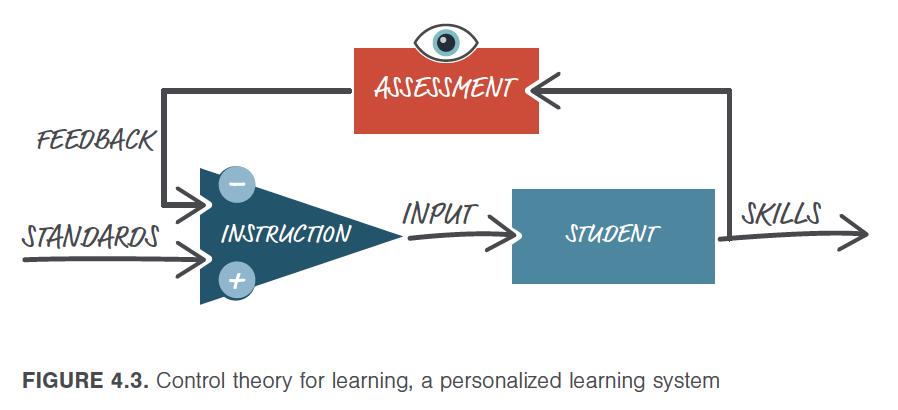
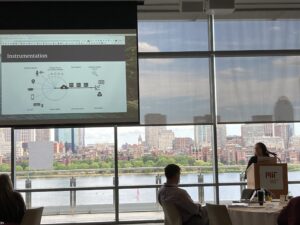
LE is Data-Informed: Instrumentation
Chapters 5 and 13 in the Toolkit
Activity in Conference Workbook, pages 29 and 31
Instrumentation is the part of the learning engineering process responsible for designing, developing, and implementing the data used to inform about the learning solution. Through a case study from CMU, participants learned how instrumentation is more than collecting data, but designing how to collect that data in the implementation of a learning experience. Groups were led through a hands-on activity where they experimented with xAPI statements to generate data and discovered ways to capture a stream of learner experiences in a system.
LE is Data-Informed: Analytics
Chapters 6 and 18 in the Toolkit
Activity in Conference Workbook, pages 32-35
Analytics is central to the investigation phase of the learning engineering process. The session centered around how data analysis helps with the process of identifying highly contextualized findings about learning within specific learning products, conditions, or populations. Groups learned the importance of “slow down and plan” when it comes to analytics. They worked on a scenario about student disconnectedness during remote learning, examining data to identify disconnected students and using those indicators to model and visualize the student disconnection.
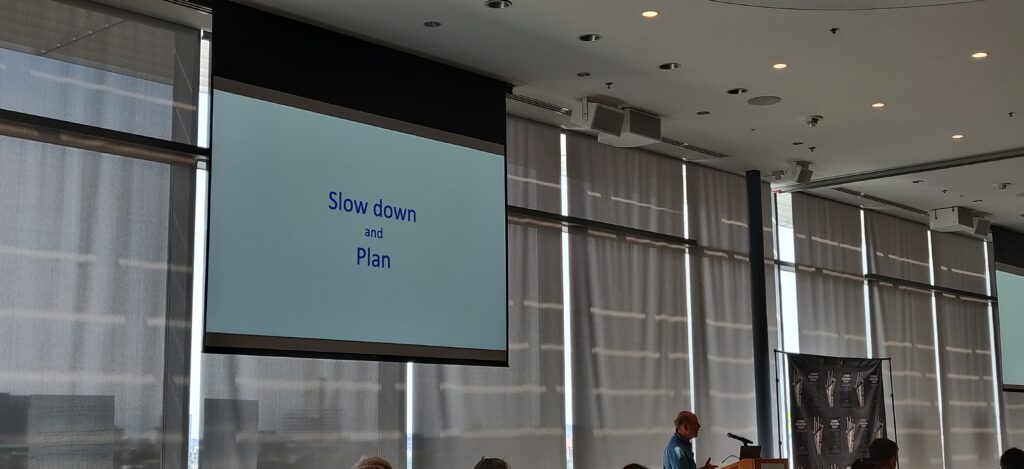
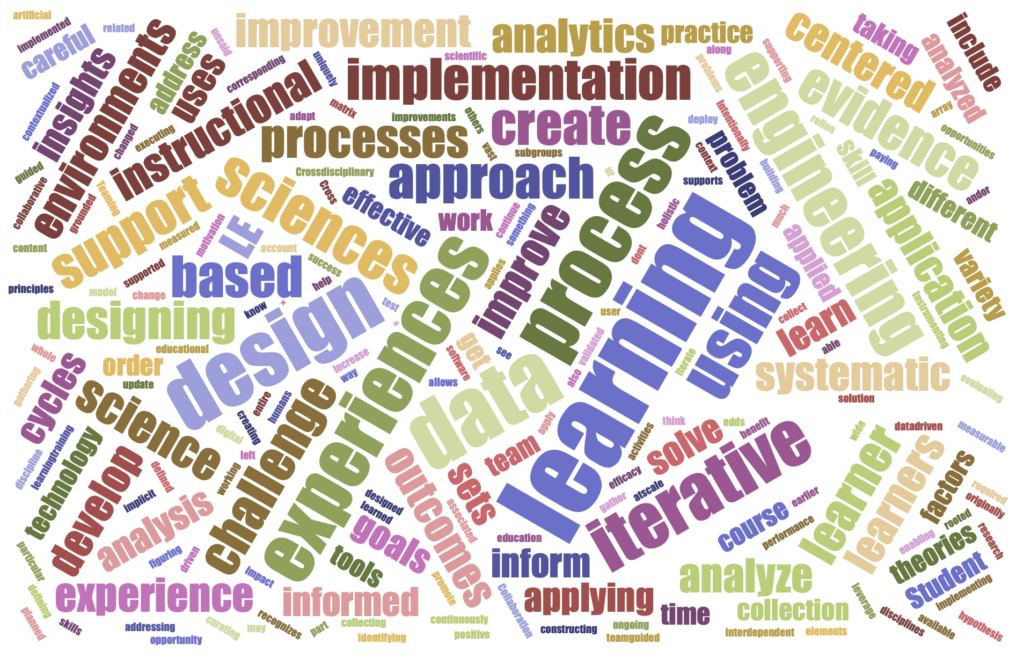
How Do You Define Learning Engineering?
At the end of the conference, we asked participants again which part of the Learning Engineering definition resonated most with them. Here’s the infographic based on what participants shared.
To read more about how the community engaged during the conference, check out the conversation on the #ICICLE2022 thread on Twitter.



